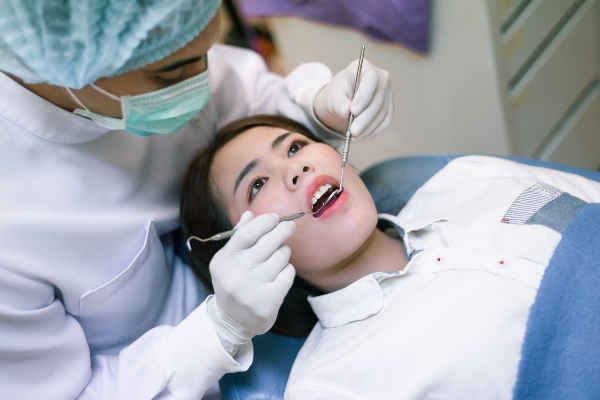Sedation Dentistry: Relaxing in the Dentist’s Chair

If you find yourself scared of visiting the dentist or undergoing dental procedures, you might benefit from sedation dentistry. Most people dealing with dental anxiety would rather endure pain from dental issues instead of meet with the dentist. Sedation dentistry can help you deal with your dental fears and relax in the dentist's chair. The dentist can apply sedation for invasive and simple procedures to ensure that you do not feel anything during the treatments. The application of sedation dentistry depends mainly on the nature of the dental anxiety.
Overview of sedation dentistry
Sedation dentistry uses medication to keep patients relaxed in the dentist's chair for treatment. People often call it sleep dentistry but this is not completely correct. While general anesthesia can be used, patients are usually awake. Dentists use different sedation levels, including:
- Minimal sedation, where the patient is awake but feels relaxed
- Moderate sedation, where the patient is conscious but may be sluggish and have no recollection of the procedure afterward
- Deep sedation, where the patient is hardly conscious but can be awakened if needed
- General anesthesia, where the patient is fully unconscious
Types of sedation options available
The following are the options available in sedation dentistry.
Inhaled minimal sedation
The dentist will administer nitrous oxide, also called laughing gas, together with oxygen via a nose mask attached firmly to the patient's nose. The gas keeps the patient relaxed. The dentist can manage the level of sedation, and the gas's effect often dissipates quickly. With this option, the patient may still be able to go home after dental treatment without assistance.
Oral sedation
The level of this sedation can range between mild to moderate, depending on the dosage administered. Patients will be given a pill for minimal sedation. The drug will be used about an hour ahead of the treatment. It will cause drowsiness but the person will remain awake. The dentist can induce moderate sedation by increasing the dose.
This is usually the most common method used in sedation dentistry. The drug may cause enough drowsiness that the patient actually falls asleep completely during treatment. However, they can be stirred out of sleep with a gentle shake.
IV moderate sedation
This dentist will induce relaxation by administering a sedative drug through the veins. The intravenous application causes the effects of the sedative to kick in almost immediately. It is possible to control the sedation level throughout the procedure.
Deep sedation and general anesthesia
Patients will take medications that will push them into a near unconscious or fully unconscious state during the treatment. Patients who are given this option cannot be woken until the anesthesia drug wears off or is reversed. Patients will usually need to arrange transport home afterward because they may be unable to drive.
Final note
All the sedation dentistry options mentioned also include using a local anesthetic to numb the area where the dentist is working and relieve pain. If you are struggling with dental fears, you can contact the dental office to ask about sedation options that can help you relax in the dentist's chair.
Request an appointment here: https://www.sacramentosleepdentist.com or call Dental Excellence of Greenhaven at (916) 293-0504 for an appointment in our Sacramento office.
Check out what others are saying about our dental services on Google: Sedation Dentist in Sacramento, CA.
Recent Posts
Are you concerned about whether or not you will receive painless dentistry at your next appointment? You aren't alone. In fact, many people every year simply avoid the dentist altogether out of fear that they will have a painful experience. Unfortunately, for some people, they have already had a negative experience, so it's even more…
If you have an upcoming dental procedure, sedation dentistry can help you manage any pain and discomfort you would otherwise feel. You do not have to experience this sort of discomfort. Talk to your dentist today about whether the office offers sedation methods. As you understand how this works, you can feel at ease going…
Dental anxiety is a common issue that affects people of all ages. This term refers to the fear, anxiety, or stress of dental visits. There are several misconceptions about dental anxiety, leading to additional fear or avoidance of necessary dental care. By separating facts from fiction, patients can better understand this condition and go to…
Dental anxiety affects millions of people in the U.S. This anxiety can often prevent patients from getting treatments that can keep oral diseases like tooth decay and gum disease away or prevents them from getting worse. Dental phobias can be the result of previous bad experiences with dentists, or they can be caused by a…


